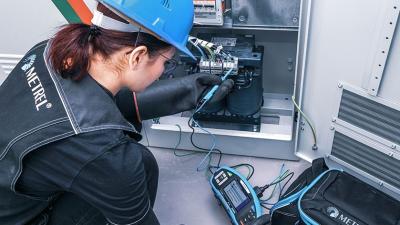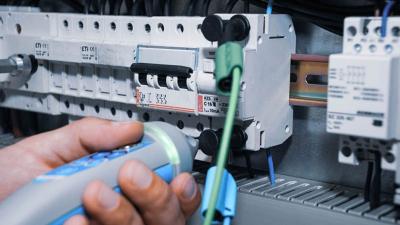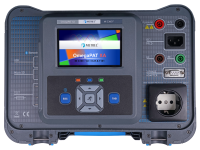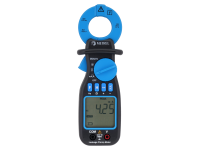Medical devices
Surgery rooms or operating theatres
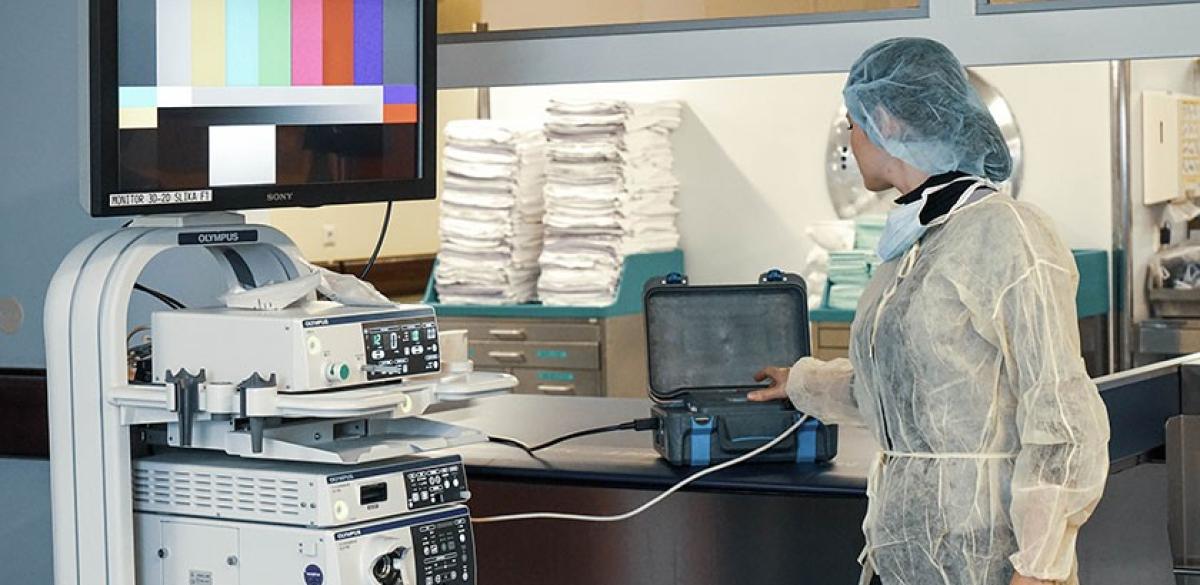
Electrical medical devices serve a number of purposes. They can perform treatment, monitoring or diagnostic tasks that would be impossible to execute otherwise. They are among the very few devices that are permitted to bring electric signals directly to human body. Most such contact is with the skin, but some are designed to work internally.
As such, they pose extreme risk to the patient, and the testing procedures for safety have to be accordingly rigorous. Design and testing of medical devices is covered by two standard families. First is IEC 60601, the oldest standard in the field. It covers device design for safety, and testing procedures with limit values for each. The other standard is IEC 62353 that covers periodic retests, but not design considerations. It takes into the consideration that some medical devices are permanently installed and their power supply cannot be easily reached. Both standards classify devices by ways of protection:
- Class I: three-pole plug, protected by insulation and bonding,
- Class II: two-pole plug, protected by double insulation,
- Class III: battery-operated or using external charger, two pole.
IEC 60601 separates electrical safety to the operator safety and patient safety. Each has a number of specific measures that can be utilised to achieve it, and at least two have to be used for each. Examples of means of protection include insulation with high resistance, grounding every accessible metal surface, properly sized interference suppression capacitors, creepage and air clearance distances. Along with these measures, the standard requires a mechanical construction that lowers the hazard. Patient protection is essentially protection of applied parts–the ones in direct contact with the patient, while operator protection covers the user in control of the device. They differ by their level of insulation from interference, disturbances and leakage. IEC 62353 uses the same classification.
- Type B (Body): applied parts not isolated from power supply and enclosure.
- Type BF (Body-floating): applied parts isolated from power supply and enclosure.
- Type CF (Cardiac-floating): applied parts for cardiac applications, isolated from supply and enclosure, highest protection degree.
Standards require extensive testing of the protective measures. The most measurements are made on leakage current. It has to be conducted between any two conductive surfaces of the instrument and in both directions. Leakage towards patient and between applied parts is measured separately with specific methods. This testing with no automatic help is extremely tedious. Depending on number of conductive surfaces and ap-plied parts, there can be multiple hundred tests to perform.
Other tests include testing the means of protection: a robust continuity of bonding test, insulation test, capacitor test (can be omitted if the capacitors are certified to their own standard), and distance measurement. Some of these tests can only be performed at design stage. Generally tests are performed in normal working conditions and in single fault conditions. It is most practical to have a measuring instrument that can simulate a single fault. IEC 62353 is only concerned with assuring the continued safety of medical devices that can be discerned without having internal access. The most faults are discovered with a simple visual examination for any corrosion, moisture ingress, frayed contacts, and similar. It includes warning labels, symbols and state of the manual. Electrical test include earth bond test, insulation resistance and leakage current. Earth bond test is performed with an instrument that can deliver at least 200 mA at open circuit voltage not more than 24 V. Low test currents (1 A or less) are recommended as they can disclose degraded con-tacts. Testing is done on any conductive accessible surface on the device. For supply bonds, higher currents are recommended (at least 10 A), and any possible weak contacts should break entirely during test. Insulation resistance test is not mandatory, it is performed if there exists any doubt about its state. The device has to be disconnected from mains, but all its power switches in ON positions. Regular test voltage is 500 V, but it can be lowered to 250 V if the measuring circuit includes overvoltage protection. Non-isolated and isolated applied parts are respectively bound together for the measurement. There are multiple methods available for leakage current measurement. Most are unique to the IEC 62353, but touch and patient methods derived from IEC 60601 are among the alternatives. Some device-specific standards can require different measurements and results, and take priority over general standard. Methods differ by parts of the device that have to be accessible, whether the device is powered or not, position of the measuring device, and to some degree in sensitivity. Floating applied parts are measured separately with one of specific methods. There is a methodology to select an appropriate leakage measurement. In most cases, more than one is necessary to assure the device’s safety. Both standards require a certain sequence of testing: first visual inspection, earth bonding, insulation, leakage, and finally any functional tests (mainly prescribed by particular standards for each type of device).
Application Notes
Measurements
Metrel offers a variant of the MI 3360 OmegaPAT XA with an adapter for applied parts. It contains AUTOSEQUENCE®S specifically for testing to IEC 62353. It supports user-created sequences along with comments, images, wiring diagrams or other extra content. All tests have adjustable parameters and limits. They can also be run as single tests. The instrument can be used to test any device, not only medical equipment. Along with the MESM software, it is part of the essential toolset for periodic testing, maintenance and troubleshooting of instruments in an electrician’s toolbox.
